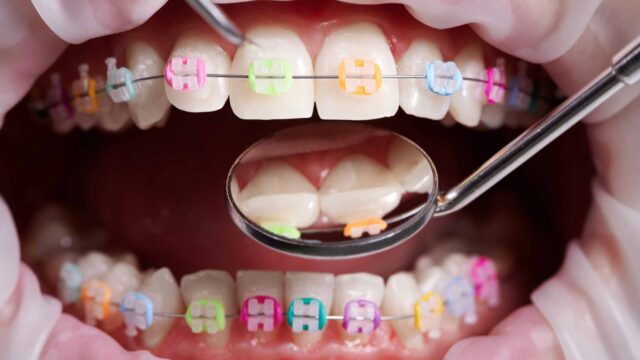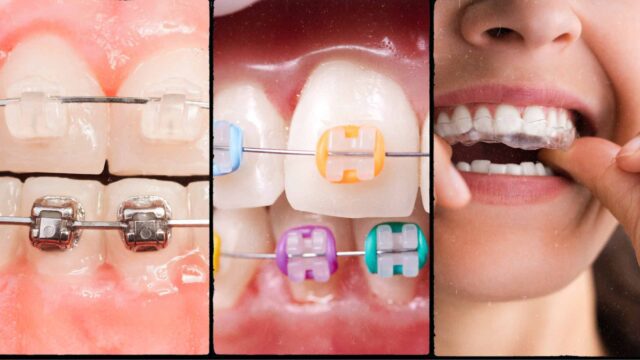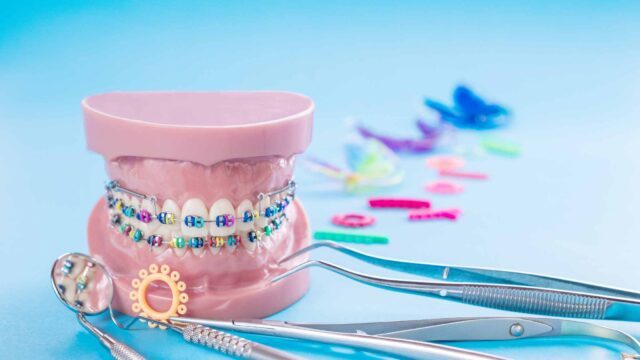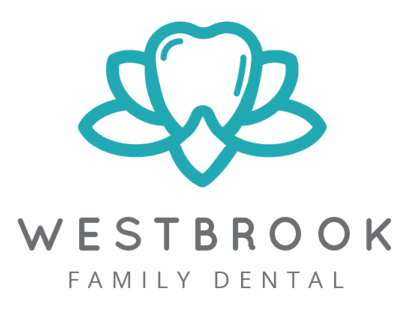Brief Overview of the Role of Orthodontists in Dental Health
Orthodontists are specialists in the field of dentistry focused on diagnosing, preventing, and treating dental and facial irregularities. While most people associate orthodontists with straightening teeth using braces or aligners, their role goes far beyond cosmetic improvement. Orthodontists play a critical part in enhancing oral health and function. They correct improper bites, known as malocclusions, which can lead to a range of oral health problems, including tooth decay, gum disease, and even tooth loss. Furthermore, orthodontic treatment can alleviate other issues, such as difficulty in speech or chewing, and prevent wear and tear that can lead to future dental problems.
Introduction to the Topics that Will Be Covered in the Blog
In this blog post, we will delve deeper into the world of orthodontics and the integral role orthodontists play in dental health. We’ll start by providing a comprehensive overview of the orthodontist’s role and the types of conditions they treat, highlighting the differences between orthodontists and general dentists. We’ll discuss how orthodontic issues can lead to more severe oral health problems and illustrate how orthodontic treatments can prevent these issues. The blog will also introduce you to common orthodontic treatments, their benefits, and patient experiences. We’ll emphasize the importance of the orthodontist-patient relationship in ensuring successful treatment outcomes. Finally, we’ll explore the long-term impacts of orthodontic care on overall health and quality of life. So, whether you’re considering orthodontic treatment, currently undergoing one, or are simply keen to learn more about this crucial dental field, this post will provide you with valuable insights.
The Role of an Orthodontist

Explanation of the Qualifications and Training of an Orthodontist
In Australia, becoming an orthodontist requires extensive education and training. After completing a Bachelor’s degree in dental surgery or dental science, an aspiring orthodontist must first practice as a general dentist for a minimum of two years. Following this, they can apply for a three-year full-time postgraduate course accredited by the Australian Dental Council, such as a Doctor of Clinical Dentistry in Orthodontics or a Master of Orthodontics. These programs provide rigorous training in biological sciences and clinical orthodontics. Once they successfully complete their specialist training, orthodontists must register with the Australian Health Practitioner Regulation Agency (AHPRA) as a specialist. They are also encouraged to join the Australian Society of Orthodontists for continuous learning and to stay updated with the latest developments in the field.
Discussion on the Types of Conditions Orthodontists Treat
Orthodontists diagnose, prevent, and treat a variety of dental and facial irregularities. These conditions typically involve misalignment of the teeth or jaws. Some of the common conditions that orthodontists treat include:
– Malocclusions or ‘bad bites’: These include overbites, underbites, and crossbites, where the upper and lower teeth do not meet correctly.
– Crowded teeth: This condition occurs when there isn’t enough space in the mouth for all the teeth to fit normally.
– Spacing problems: These include gaps between teeth caused by missing teeth or teeth that do not “fill up” the mouth.
– Protruding teeth: This can be a single tooth or multiple teeth that are positioned forward in the mouth.
Difference Between an Orthodontist and a General Dentist
While both orthodontists and general dentists help maintain oral health, there are distinct differences between the two. A general dentist takes care of a wide range of dental issues, including tooth decay, gum disease, and basic tooth repair. They can also perform minor orthodontic work.
On the other hand, an orthodontist is a specialist who has received additional years of training specifically in orthodontics, making them experts in aligning jaws, straightening teeth, and correcting bites. They use devices like braces, aligners, and other orthodontic appliances to help patients achieve a functional bite and aesthetic smile. They’re capable of handling more complex orthodontic cases and are equipped to provide a wider range of treatment options.
In essence, a general dentist is like a general practitioner, capable of addressing various oral health issues, while an orthodontist is a specialist focusing specifically on the alignment of teeth and jaws.
The Importance of Orthodontics to Oral Health

The Link Between Orthodontic Issues and Oral Health Problems
Orthodontic issues such as crooked teeth, overcrowding, or malocclusions (bad bites) don’t just affect your smile’s aesthetics. They can also lead to numerous oral health problems. For instance, misaligned teeth can create hard-to-reach areas in your mouth that become breeding grounds for bacteria, increasing the risk of tooth decay and gum disease.
Overbites and underbites, types of malocclusions, can lead to uneven wear of teeth, chipping, and damage, and in severe cases, these issues may result in headaches, jaw pain, and temporomandibular joint (TMJ) disorders. Furthermore, improper bites can also contribute to difficulties in speaking and eating properly.
Explanation of How Orthodontic Treatments Can Prevent Oral Health Issues
Orthodontic treatments aim to correct the alignment of your teeth and jaws, ensuring they function as they should. Straightening crooked teeth through braces or aligners can eliminate the hard-to-reach spots, making oral hygiene practices like brushing and flossing easier, thus lowering the risk of tooth decay and gum diseases.
Treating malocclusions, on the other hand, ensures even distribution of bite force across all teeth, minimizing the risk of damage due to uneven wear or chipping. It also helps in resolving speech and chewing difficulties and reduces the risk of TMJ disorders.
Common Orthodontic Treatments and Their Benefits

Description of Common Orthodontic Treatments
Orthodontics involves a range of treatments designed to correct issues such as misaligned teeth, overcrowding, and bite problems. Here are a few common ones:
- Traditional Braces: These are metal brackets attached to the teeth, connected by wires and small rubber bands. They are the most common type of fixed orthodontic appliances.
- Ceramic Braces: Similar to traditional braces but made of clear materials to be less visible. They’re mostly chosen for aesthetic reasons.
- Lingual Braces: These are like traditional braces but placed on the inside surfaces of the teeth, making them invisible from the outside.
- Clear Aligners: Examples include Invisalign. These are virtually invisible, removable appliances that are used to straighten teeth without the use of conventional brackets and wires.
- Palatal Expanders: Devices used primarily in children to widen the upper jaw and make room for permanent teeth.
Discussion on How These Treatments Work and Their Benefits
Orthodontic treatments work by applying continuous, gentle force to slowly move teeth in a specific direction. Over time, the pressure reshapes the bone, leading to straightened teeth and corrected bites.
The benefits of orthodontic treatments are manifold. They improve oral function, making it easier to chew and speak. Straight teeth are easier to clean, reducing the risk of tooth decay and gum disease. Orthodontic treatment can also enhance facial aesthetics, leading to increased self-confidence and better quality of life.
The Orthodontist-Patient Relationship

Importance of Communication and Trust Between the Orthodontist and the Patient
A strong orthodontist-patient relationship is built on clear communication and trust. This means that the orthodontist should be able to explain the diagnosis, treatment plan, and expected outcomes in a way that’s easy for the patient to understand. The orthodontist should also actively listen and respond to the patient’s concerns and questions.
Trust is another vital component. Patients need to trust that their orthodontist has the skills and knowledge to provide the best possible care and that they’ll work in the patient’s best interests. This level of trust can significantly influence the patient’s level of comfort, treatment adherence, and ultimately, the treatment’s success.
How Orthodontists Can Help Patients Feel Comfortable and Informed About Their Treatments
Orthodontists can ensure patient comfort by creating a welcoming and friendly environment in their clinics. They can introduce their team, explain what the patient can expect during each visit, and take the time to answer questions.
To keep patients informed, orthodontists should provide clear and understandable information about the treatment plan, the reasons behind their treatment recommendations, potential risks and benefits, and the expected timeline of results. The use of visual aids, brochures, or digital tools can be effective in explaining complex procedures.
Tips for Finding the Right Orthodontist for Your Needs
- Check Qualifications: In Australia, orthodontists must complete a degree in dentistry, several years of general dental practice, and then a three-year specialist training program in orthodontics. Check that your orthodontist is registered with the Dental Board of Australia.
- Ask for Recommendations: Friends, family, or your general dentist can often provide recommendations.
- Look at Reviews and Testimonials: Online reviews can provide insight into patient satisfaction, the quality of treatment, and the orthodontist’s interaction style.
- Comfort and Communication: Consider if the orthodontist communicates clearly and makes you feel comfortable. A good orthodontist should encourage questions and be patient in addressing your concerns.
- Consider the Clinic: Is the clinic clean, modern, and well-equipped? Is it easily accessible from your home or work?
- Cost and Payment Plans: Orthodontic treatment can be costly. Many Australian orthodontists offer payment plans to spread the cost over the duration of the treatment, making it more manageable.
Remember, choosing the right orthodontist is a personal decision, and it’s important to find someone you feel comfortable with, can communicate clearly with, and trust to provide the best care possible.
The Long-Term Impact of Orthodontic Care

Discussion on the Ways Orthodontic Care Can Improve Quality of Life and Overall Health
Orthodontic care can have a transformative impact on both quality of life and overall health in the long run.
From a functional perspective, correcting malocclusions and misalignments can improve biting, chewing, and even speech in some cases. A proper bite also prevents uneven wear of teeth, reducing the risk of future dental problems.
From a health perspective, straighter teeth are easier to clean, reducing the risk of gum disease and tooth decay. In some cases, orthodontic treatments can also alleviate symptoms of temporomandibular joint disorders and reduce the risk of trauma to protruding front teeth.
From a psychological perspective, having a well-aligned and attractive smile can boost self-esteem and confidence, impacting social interactions and mental well-being positively.
Overview of the Long-Term Maintenance and Care After Orthodontic Treatments
Even after orthodontic treatment is completed, long-term maintenance is crucial to keep the teeth in their new position. Here are some key components of post-treatment care:
- Retainers: After braces or aligners are removed, most patients will need to wear a retainer. This could be a removable device or a fixed wire behind the teeth. The retainer helps to maintain the new position of the teeth until the bone and tissues around them have adjusted.
- Regular Dental Check-ups: Regular visits to your general dentist for cleaning and examinations are essential to ensure ongoing oral health.
- Good Oral Hygiene Practices: Brushing twice a day, flossing daily, and using an antibacterial mouthwash should be part of your regular routine to keep your teeth and gums healthy.
- Healthy Diet: A balanced diet that’s low in sugary and acidic foods can help prevent tooth decay and gum disease.
“If you’re considering orthodontic treatment, don’t hesitate. Schedule an appointment with Westbrook Family Dental in Toowoomba, where a team of qualified professionals is ready to guide you on your journey towards improved oral health and a confident smile.”
FAQ
- What is the role of an orthodontist in dental health?
Orthodontists play a crucial role in maintaining dental health by diagnosing, preventing, and treating dental and facial irregularities. They correct misaligned teeth, treat malocclusions (improper bites), and guide facial development to ensure proper teeth alignment and function.
- What is the difference between a dentist and an orthodontist?
Both dentists and orthodontists work on oral care, but an orthodontist is a dentist who has undergone further specialization. After completing a degree in dentistry, they undertake additional years of training to specialize in diagnosing and treating misaligned teeth and jaws.
- What common conditions do orthodontists treat?
Orthodontists commonly treat conditions like crooked or crowded teeth, overbites, underbites, crossbites, and disorders of the jaw joints. They can also handle issues related to the growth and development of the jaw.
- What are the typical orthodontic treatments?
Common orthodontic treatments include traditional metal braces, ceramic braces, lingual braces, and clear aligners like Invisalign. Treatments are customized to the patient’s needs and the specific issues they are facing.
- How can orthodontic treatment improve my overall oral health?
Orthodontic treatment can improve oral health by correcting issues that make it hard to clean certain areas of the mouth, reducing the risk of tooth decay and gum disease. By correcting malocclusions, orthodontics can also improve chewing and speech, reduce the risk of trauma to protruding teeth, and alleviate symptoms of temporomandibular joint disorders.
- How do I find the right orthodontist for my needs?
Look for an orthodontist who is qualified and registered with the Dental Board of Australia. Consider recommendations from friends, family, or your general dentist. Evaluate their communication style, the comfort level you feel with them, their clinic, and their offered payment plans. In Toowoomba, you can book an appointment with Westbrook Family Dental for a consultation.
- What is the long-term impact of orthodontic care?
Orthodontic care can significantly improve your quality of life and overall health. It can lead to better function of your teeth, improved oral hygiene, alleviation of discomfort or pain, and enhanced self-esteem from a more aligned smile. After treatment, long-term maintenance is crucial to ensure the benefits last.
- What does post-orthodontic treatment care involve?
Post-treatment care usually involves wearing retainers to maintain the new position of the teeth. Regular dental check-ups, good oral hygiene, and a balanced diet are also crucial to maintaining oral health after orthodontic treatment.
- Can I book an orthodontic consultation at Westbrook Family Dental in Toowoomba?
Yes, you can schedule an orthodontic consultation at Westbrook Family Dental. Our team of experienced orthodontists is ready to guide you on your journey to improved dental health.



